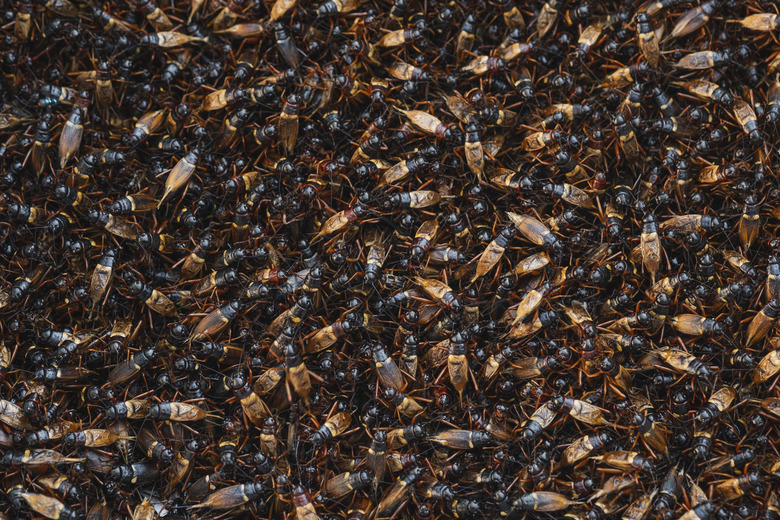What Kind Of Environments Do Crickets Live In?
Crickets are a variety of insects with more than 900 species under the order Orthoptera. They are either brown or black, and they have four wings, with their front wings covering their hind wings when standing. Their antennae run almost the entire length of their body. They are omnivorous, eating mostly decaying fungi and plant material.
Shadow
Shadow
To avoid predators, crickets are primarily nocturnal and prefer dark spaces such as beneath rocks and inside logs. Different species of crickets are found all over the globe, with more than 120 species in the United States alone. They live in just about every conceivable biome, from swamp and marshlands to rain forests, mountains and deserts.
Semi-Arid Climate
Semi-Arid Climate
If crickets live in a climate that is too moist, a fungus can begin to spread over their bodies. They tend to lay their eggs in moist areas, but they cannot live there for long. In experiments, they prefer an environment with grass and soil over one with pebbles and sand.
Temperature
Temperature
Crickets thrive ideally at a temperature from 82 to 86 degrees Fahrenheit. They can live in climates with highs in the 70s, but their functions take longer, such as laying eggs and reproducing. At temperatures above 96, they start to die.
Mating Preferences
Mating Preferences
Male crickets sing to attract females as part of the courtship ritual. Studies have shown, though, that females tend to prefer the songs of younger males, which are distinguished by their higher volume and pitch.
Cite This Article
MLA
Renico, Leslie. "What Kind Of Environments Do Crickets Live In?" sciencing.com, https://www.sciencing.com/kind-environments-do-crickets-live-8383719/. 22 November 2019.
APA
Renico, Leslie. (2019, November 22). What Kind Of Environments Do Crickets Live In?. sciencing.com. Retrieved from https://www.sciencing.com/kind-environments-do-crickets-live-8383719/
Chicago
Renico, Leslie. What Kind Of Environments Do Crickets Live In? last modified August 30, 2022. https://www.sciencing.com/kind-environments-do-crickets-live-8383719/
